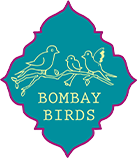The Origins of «Pashmina» : A Look at the Kashmiri Cottage Industries
Introduction to the Importance of Kashmiri Cottage Industries
«Pashmina» , a term that comes from the Persian word «Pashmina» , means «soft gold» in the Kashmiri dialect. This precious fiber has a long history and deserves special attention in the world of conscious luxury and sustainable fashion. Our brand, Bombay Birds , is proud to embrace the principle of slow fashion by supporting the tradition and craftsmanship of the Kashmiri cottage industries.
The History of the "Pashmina"
The Indian "Pashmina" trade was started in the 15th century by the Kashmiri ruler Zayn-ul-Abidin, who brought weavers from Central Asia to the subcontinent. To this day, master craftsmen in Kashmir pay tribute to his memory. Pashminas are valued worldwide for their elegance, exclusivity and the importance of craftsmanship .
The Myth of the "Pashmina"
In recent years, the word "pashmina" has become a fashionable term that is often misunderstood. Many retailers use this term to refer to scarves made from blends such as "100% silk" or "50% silk and 50% wool". Consumers should be aware: "pashmina" is the result of traditional craftsmanship and not a blend.
What is a «Pashmina» ?
“All Pashminas are cashmere, but not all cashmere is Pashmina.”
"Pashmina" refers to a special type of yarn, not the fabric itself. The classic Kashmiri "Pashmina" is one of the finest textiles in the world and is made from the fine wool of the Changthangi goat, which lives at altitudes of up to 4,000 meters above sea level. Winter temperatures here can reach as low as -35 °C, which results in the particularly fine and warm wool.
The manufacturing process
Each «Pashmina» is unique. The process of «Pashmina» weaving is a complex art form that requires years of practice and patience. Many artisans inherit this knowledge from their ancestors. Depending on the size and pattern, weaving a shawl takes between 3 and 6 weeks, while exclusive “Kanni” designs can take up to 6 or 18 months.
The specifications of the «Pashmina»
Differences between «Pashmina» and other types of wool:
- «Pashmina» : 12-13 micrometers
- Cashmere: 15-19 micrometers
- Cashmere Merino wool: 20-24 micrometers
- Human hair: 70 micrometers
The Promise of Bombay Birds
We guarantee the authenticity and quality of our products. Each scarf from our unique «Pashmina» collection is made from the wool of the Changthangi goat in Ladakh, India. We only use traditional hand-weaving techniques, which are carried out by talented artisans in Kashmir.
Our goal is to preserve this ancient craft , support the local population and at the same time breathe life into urban designs. We attach great importance to the fact that no child labor is used in the production of our products.
Conclusion
The Kashmiri cottage industries are not only part of history but also an integral part of contemporary conscious luxury. At Bombay Birds, we are committed to supporting these traditions while bringing you the highest quality and exquisite designs straight from Kashmir. Discover the world of «Pashmina» and its incomparable charm with us!


